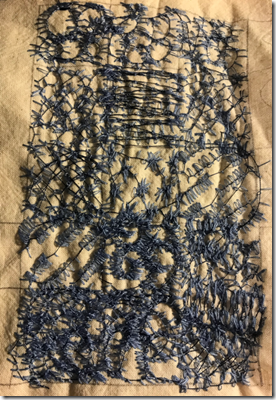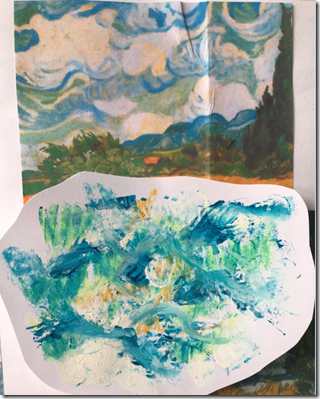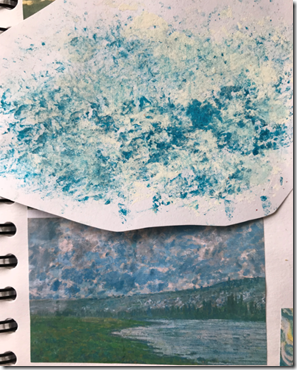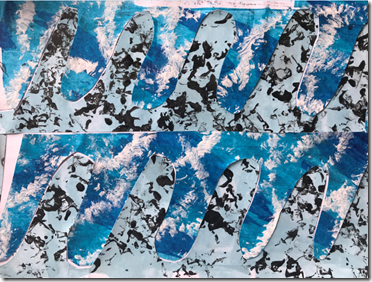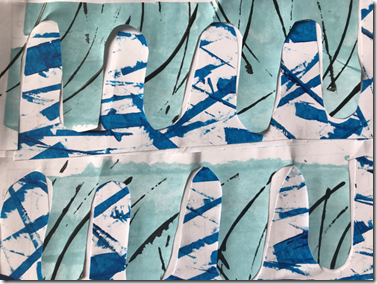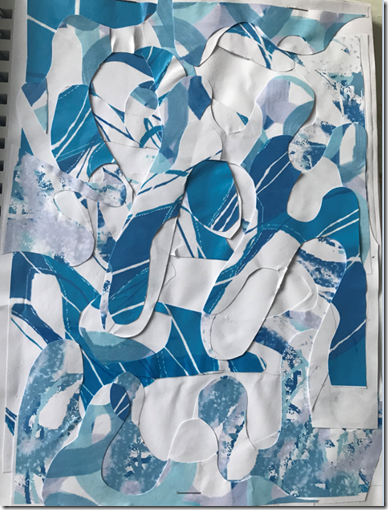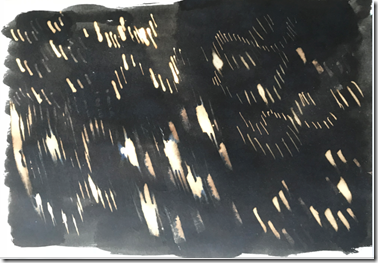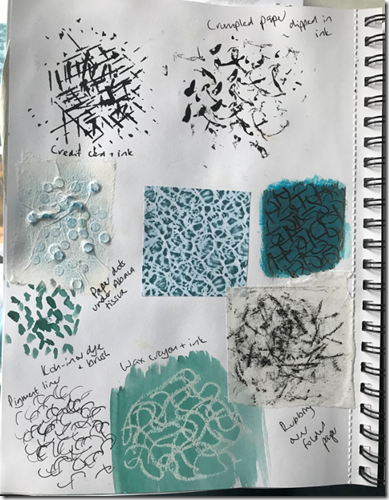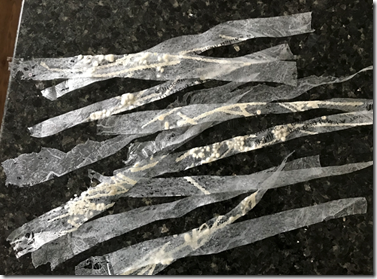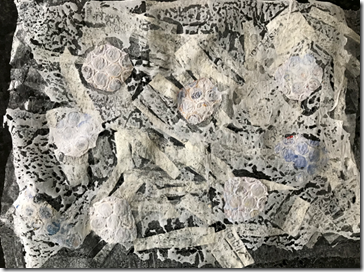In this chapter I experimented with free machine embroidery to produce samplers showing different textural effects. In all of the samples I used a medium weight Calico background and a size 100 needle. Each patch was about 3cm square. In samples 3.2 – 3.5 I used the same designs in each position on the grids so that I could see what difference the different techniques and threads made to the effect. Image 3.1 shows an example of one design dome in four different ways. The technique using straight whip stitch (top right) produced a much looser interpretation than the others. This could have been enhanced further with a darker thread in the bobbin.
 Image 3.1 – comparison of one design in four techniques/threads
Image 3.1 – comparison of one design in four techniques/threads
 Image 3.2 – Straight stitch – equal tension top and bottom. These samples produced quite clear shapes; they are drawing with stitch.
Image 3.2 – Straight stitch – equal tension top and bottom. These samples produced quite clear shapes; they are drawing with stitch.
3.3 Straight whip stitch i.e. tight top tension, loose bottom tension. This technique produced much looser interpretations of the designs giving a more organic appearance.
3.4 Zig-zag whip stitch. This technique produced a more dense covering of stitch and a pleasing irregularity to the lines in the designs.
3.5 Straight and zig-zag cable stitch. This sampler was all done with the same perle thread hand wound on to the bobbin. It produced slightly looser versions of the design than the straight stitch samples in 3.2.
3.6 – The samples of cable stitch were made using different thicknesses and types of thread. It was surprising how long this sampler took to make; I had numerous abortive attempts at using different threads in the bobbin. I tried using different tensions but many of the thicker threads, chenille and tubular threads simply wouldn’t work on my machine. Those that did work in 3.6 produced some interesting textures that sit on top of the fabric creating a very tactile surface.

